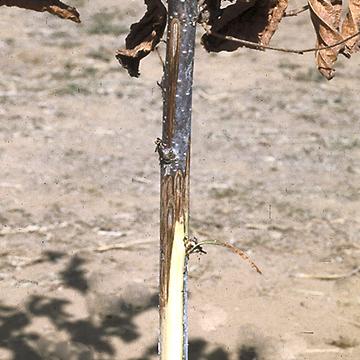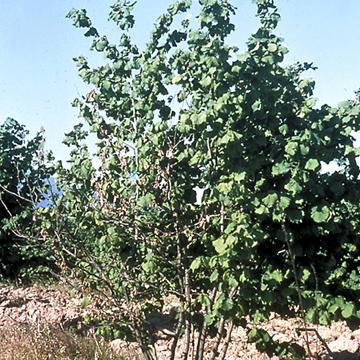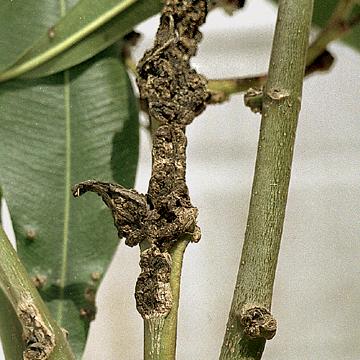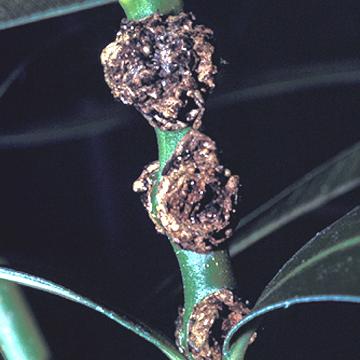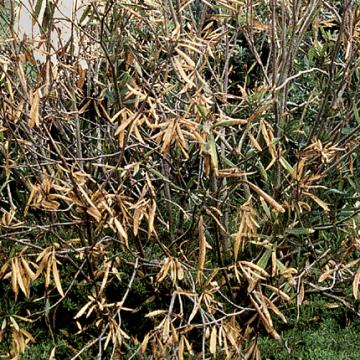DISEASE: Bacterial blight
HOST: Hazelnut
Diseased young tree with discoloration of the cambium. Dieback of young twigs and branches is characteristic. Other typical symptoms are bud and twig necrosis and small, angular or round, water-soaked leaf spots.
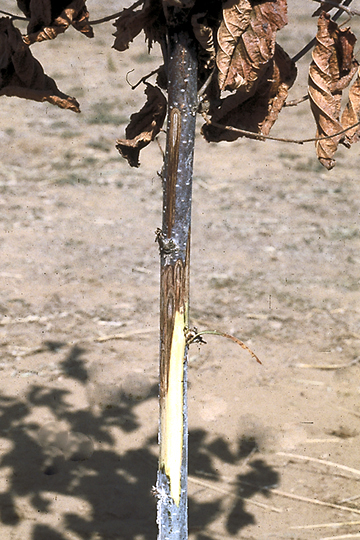
Bacterial blight | Hazelnut
DISEASE: Bacterial blight
HOST: Hazelnut (Corylus americana)
PATHOGEN: Xanthomonas arboricola pv. corylina
SOURCE: J. Pscheidt
DISEASE: Bacterial canker
HOST: Hazelnut
Primary symptoms are failure of buds to break and withering and death of new foliage in spring. Dead leaves remain attached to limbs after normal leaf fall.
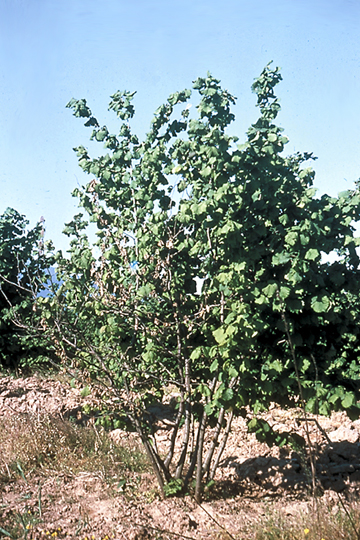
Bacterial canker | Hazelnut
DISEASE: Bacterial canker
HOST: Hazelnut (Corylus americana)
PATHOGEN: Pseudomonas syringae pv. avellanae
PATHOGEN SYNONYM: Pseudomonas avellanae
SOURCE: P. Psalidas
DISEASE: Bacterial leaf spot
HOST: Snapdragon
Leaves with large necrotic areas with brownish centers and purplish margins. Lesions are slightly sunken.
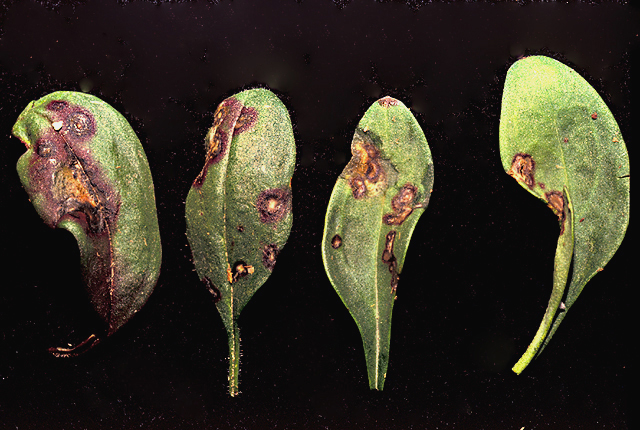
Bacterial leaf spot | Snapdragon
DISEASE: Bacterial leaf spot
HOST: Snapdragon (Antirrhinum majus)
PATHOGEN: Pseudomonas syringae pv. antirrhini
SOURCE: R. Raabe
DISEASE: Oleander knot
HOST: Oleander
Oleander with small knots/galls on leaf and stems.
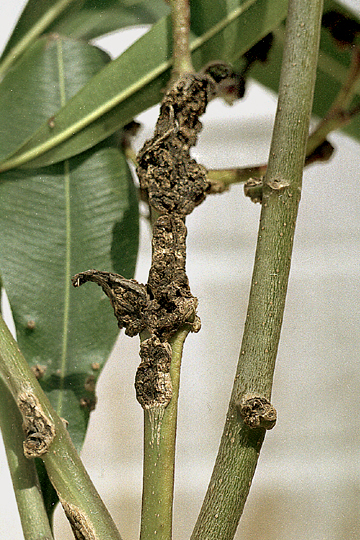
Oleander knot | Oleander
DISEASE: Oleander knot
HOST: Oleander (Nerium oleander)
PATHOGEN: Pseudomonas savastanoi pv. nerii
SOURCE: W. Sinclair
DISEASE: Oleander knot
HOST: Oleander
Young stem with knots/galls.
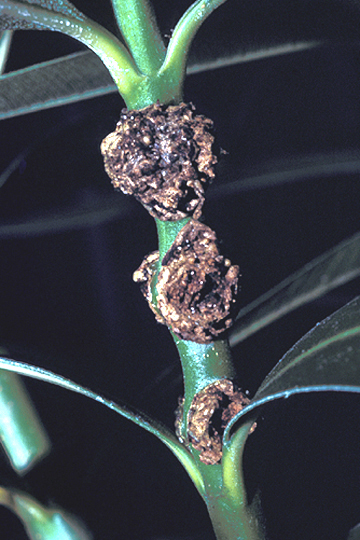
Oleander knot | Oleander
DISEASE: Oleander knot
HOST: Oleander (Nerium oleander)
PATHOGEN: Pseudomonas savastanoi pv. nerii
SOURCE: R. Raabe
DISEASE: Oleander knot
HOST: Oleander
Leaf with early stage of knot/gall formation.
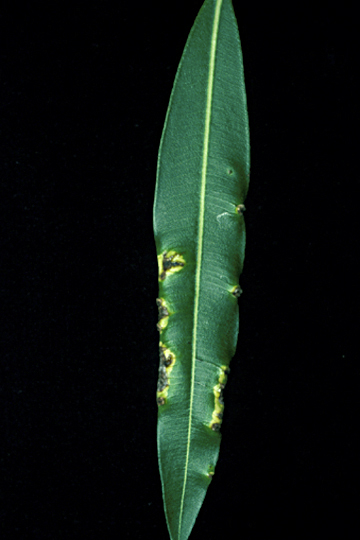
Oleander knot | Oleander
DISEASE: Oleander knot
HOST: Oleander (Nerium oleander)
PATHOGEN: Pseudomonas savastanoi pv. nerii
SOURCE: R. Raabe
DISEASE: Oleander knot
HOST: Oleander
Infected flowers with small knots/galls and necroses.
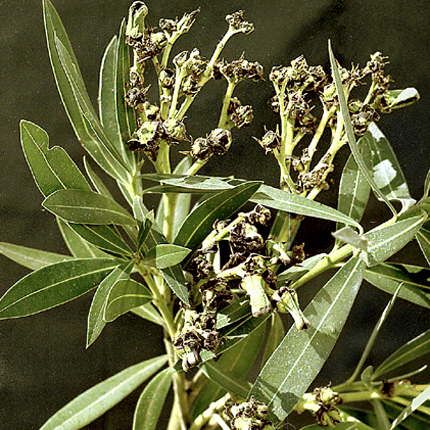
Oleander knot | Oleander
DISEASE: Oleander knot
HOST: Oleander (Nerium oleander)
PATHOGEN: Pseudomonas savastanoi pv. nerii
SOURCE: W. Sinclair
DISEASE: Oleander leaf scorch
HOST: Oleander
Diseased plant with scalloped, yellowish leaves. This usually is followed by dieback of twigs and branches. Plants often die 2 years after infection.
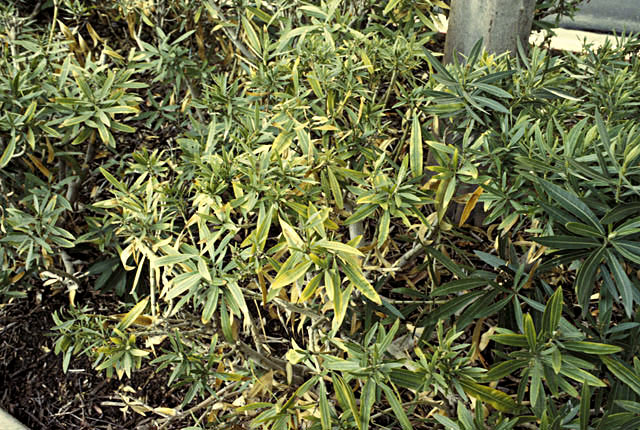
Oleander leaf scorch | Oleander
DISEASE: Oleander leaf scorch
HOST: Oleander (Nerium oleander)
PATHOGEN: Xylella fastidiosa
SOURCE: S. Purcell


